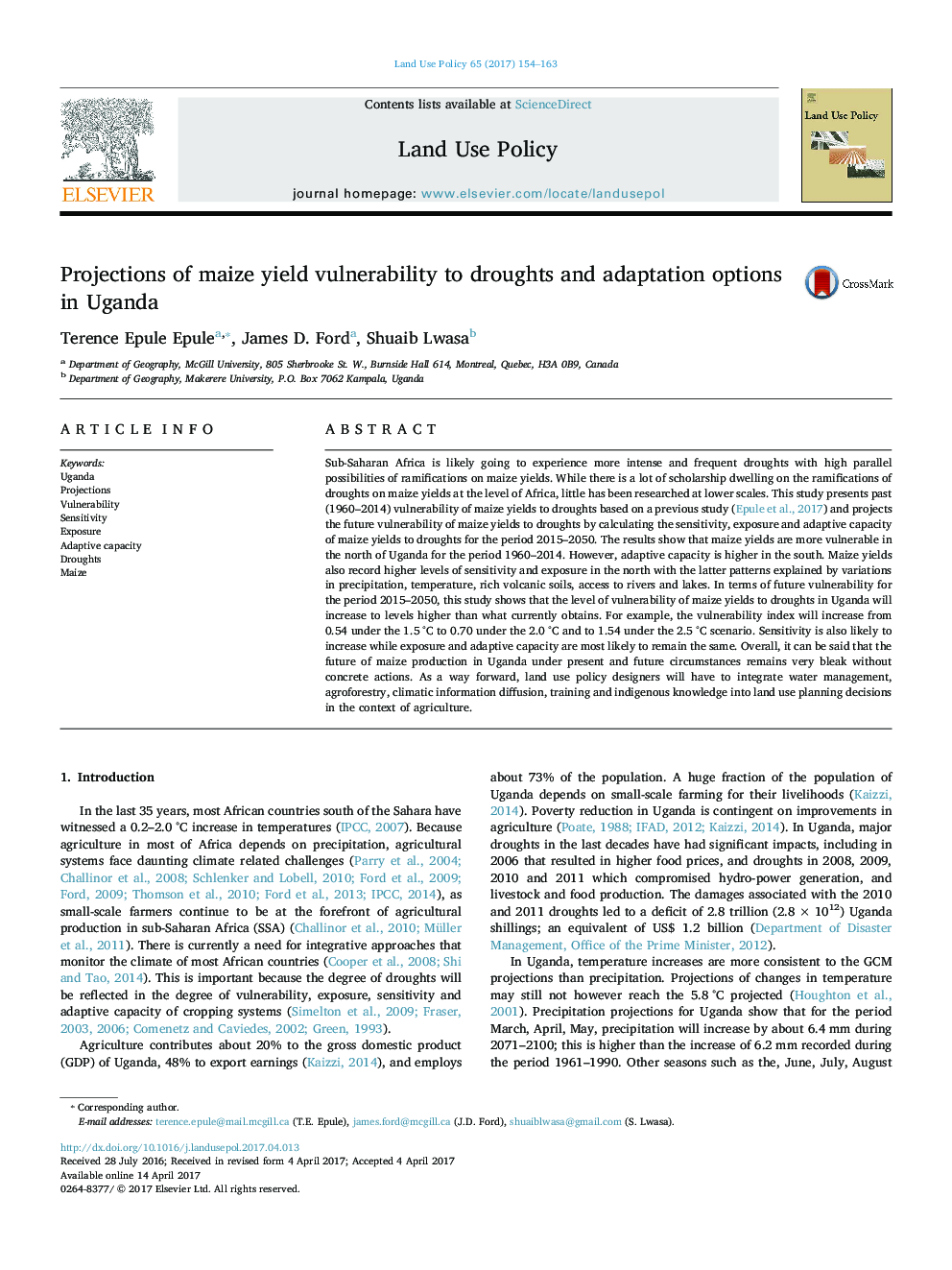| Article ID | Journal | Published Year | Pages | File Type |
|---|---|---|---|---|
| 6461137 | Land Use Policy | 2017 | 10 Pages |
â¢Study projects the vulnerability of maize yields to droughts in Uganda.â¢The north has higher vulnerability, exposure and lower adaptive capacity.â¢By 2050 vulnerability and sensitivity will increase under rising temperature scenarios.â¢1960-2014 levels of exposure and adaptive capacity will be maintained up to 2050.â¢Policy considerations are water management, agroforestry and indigenous knowledge etc.
Sub-Saharan Africa is likely going to experience more intense and frequent droughts with high parallel possibilities of ramifications on maize yields. While there is a lot of scholarship dwelling on the ramifications of droughts on maize yields at the level of Africa, little has been researched at lower scales. This study presents past (1960-2014) vulnerability of maize yields to droughts based on a previous study (Epule et al., 2017) and projects the future vulnerability of maize yields to droughts by calculating the sensitivity, exposure and adaptive capacity of maize yields to droughts for the period 2015-2050. The results show that maize yields are more vulnerable in the north of Uganda for the period 1960-2014. However, adaptive capacity is higher in the south. Maize yields also record higher levels of sensitivity and exposure in the north with the latter patterns explained by variations in precipitation, temperature, rich volcanic soils, access to rivers and lakes. In terms of future vulnerability for the period 2015-2050, this study shows that the level of vulnerability of maize yields to droughts in Uganda will increase to levels higher than what currently obtains. For example, the vulnerability index will increase from 0.54 under the 1.5 °C to 0.70 under the 2.0 °C and to 1.54 under the 2.5 °C scenario. Sensitivity is also likely to increase while exposure and adaptive capacity are most likely to remain the same. Overall, it can be said that the future of maize production in Uganda under present and future circumstances remains very bleak without concrete actions. As a way forward, land use policy designers will have to integrate water management, agroforestry, climatic information diffusion, training and indigenous knowledge into land use planning decisions in the context of agriculture.
